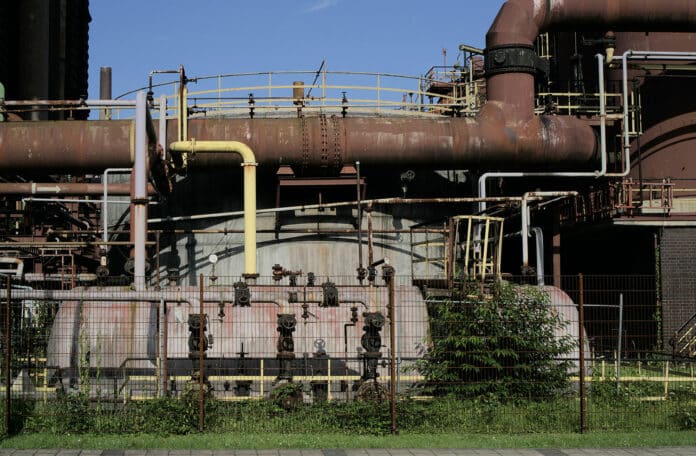To protect objects made of metal, they are coated with corrosion-resistant materials such as polymeric and metal coatings. The quality of coating and the resulting rate of corrosion of the underlying metal substrate can be measured by a variety of corrosion measurements by using standard laboratory electrochemical cells.
However, there is always a need for low-cost, portable, and non-destructive electrochemical cells, which can be used in the on-site field for condition monitoring of large structures, such as bridges, aircraft, military vehicles, and gas pipelines.
Now, researchers at Bournemouth University have developed and patented a new corrosion sensor that could improve the safety and reliability of such large structures. The device can detect defects and risks in major infrastructure at a much earlier stage than the methods that are currently used.
It also improves safety and reduces the need for time-consuming repairs. If we can spot health risks in vehicles and mechanical structures before corrosion reaches an advanced and dangerous stage, we can avoid costly, lengthy repairs and hopefully prevent structures from being scrapped altogether.
Unlike other corrosion sensors used by industry, the new device is wireless, so it can be attached to a structure, and its readings can be continuously monitored off-site. The sensor can be used on any kind of surface, whereas most current devices only work on metallic surfaces, which the electricity from the sensor must pass through.
“The aerospace industry, for example, would prefer a sensor that can detect failures beneath non-metallic coatings. Currently, this involves removing a patch of the non-conductive coating to make the conductive surface available – this could be counter-productive as it can initiate corrosion more rapidly,” explained Zulfiqar Khan, Professor of Design Engineering and Computing at Bournemouth University who led the development.
“Unmonitored failures lead to costly consequences. Scheduled inspections are tedious and time-consuming and are mostly limited to visual or surface failures. Our latest sensor technology is a futuristic, much-needed solution. It can work remotely, it works on metallic and non-metallic surfaces, and can detect defects several millimeters below the surface which are not visible to the naked eye,” he continued.
The corrosion sensor is a result of a series of research projects which began over a decade ago at the Bovington Tank Museum in Dorset. The museum holds one of the most significant collections of tanks and military vehicles in the world. Professor Khan and his team applied their expertise to develop a means to monitor corrosion in the vehicles to help preserve their cultural heritage.
This work ultimately led to the development of a £2.5 million conservation center for the most at-risk tanks. They also identified maintenance work that could be carried out on some tanks so they could be driven safely at showgrounds and the public could see them in action. In 2016, the team then secured funding to work with infrastructure companies in the U.S., where the technology-enhanced their business and brought commercial benefits.
The technology has now been granted patents in the U.K., and the U.S. Professor Khan and his team are keen to work with partners so that it can be rolled out across the industry, and engineering and construction companies can start realizing the benefits. In addition to benefits for operational infrastructure, the device would help companies with large fleets of vehicles or machinery that may be kept in depots and not regularly used or serviced.
“It is a bit like coming home from work and deciding you want some food that has been at the back of the cupboard, only to find that it is past its use-by date,” he said. “Our device can continually monitor mechanical structures to ensure they always remain in date and will not have to be thrown out,” Professor Khan concluded.
